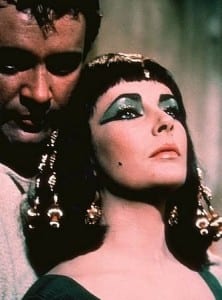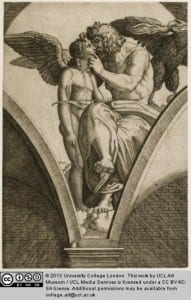Upcoming event: Caesar and Cleopatra, February 6th 2013
By Andie Byrnes
Britain’s first million-pound film, starring Vivien Leigh and Claude Rains, was Caesar and Cleopatra. Based on George Bernard Shaw’s 1901 play of the same name, with a screenplay written by Shaw, it opened on 12th December 1945 in the Odeon at Marble Arch in London, and was released in the U.S. in September 1946. It is showing at the Petrie Museum of Egyptian Archaeology (Malet Place, London WC1E 6BT), hosted by John J. Johnston, on February 6th 2013.
Made during World War II, it was hoped that the investment of over £1,250,000 into the film would help to establish Britain in the American cinematic market. Filmed in Technicolor, it took two years to complete, most of it set within a custom-built studio in Denham, England. Over 500 pieces of jewellery and 2000 costumes were created for the film and 400 tons of sand were imported into the Denham studio. The largest scene included more than 1500 actors. Conceived on an epic scale, it produced an Academy Award Nomination for Best Art Direction for John Bryan. The main stars of the film, Claude Raines, Vivien Leigh and Stuart Granger, were all household names. Vivien Leigh was particularly famous for her role as Scarlett O’Hara, six years earlier, in Gone With The Wind, which was one of the highest-grossing films of all-time.
(more…)
Filed under Petrie Museum of Egyptian Archaeology
Tags: Archaeology on Film, Caeser, Claude Rains, Cleopatra, Egypt, evening event, event, Film, Petrie, Petrie Museum, Pharaoh, Ptolemy, Vivien Leigh
1 Comment »
 Close
Close




